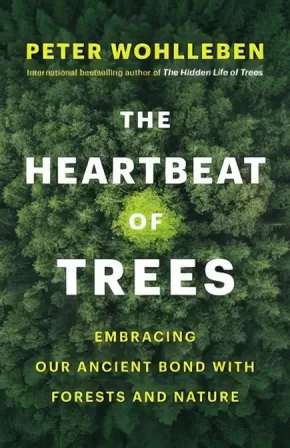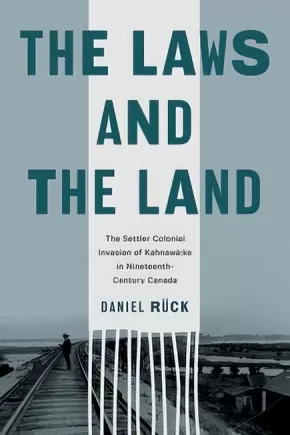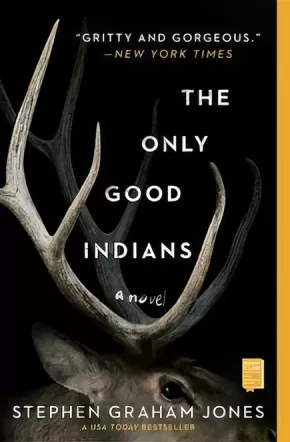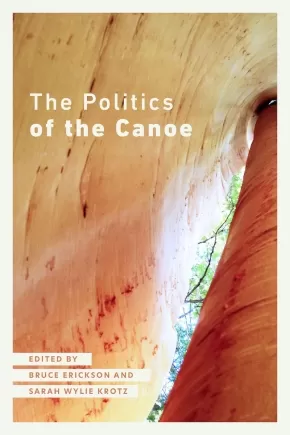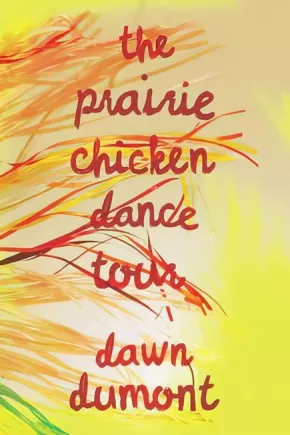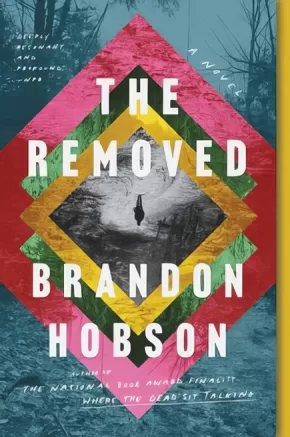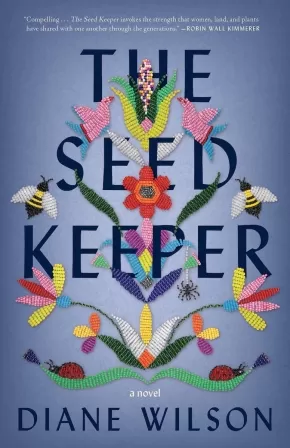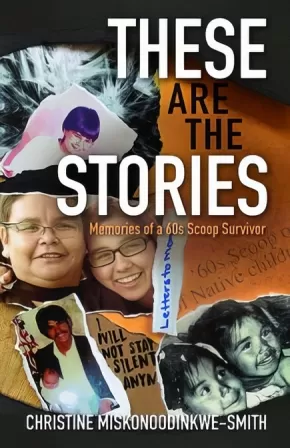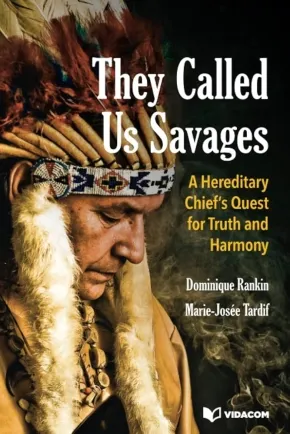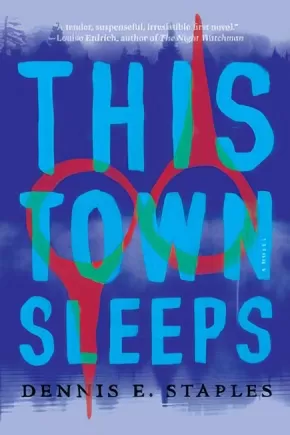Adult Book
Synopsis:
In a world that requires knowledge and wisdom to address developing crises around us, The Gatherings shows how Indigenous and non-Indigenous peoples can come together to create meaningful and lasting relationships.
Thirty years ago, in Wabanaki territory – a region encompassing the state of Maine and the Canadian Maritimes – a group of Indigenous and non-Indigenous individuals came together to explore some of the most pressing questions at the heart of Truth and Healing efforts in the United States and Canada. Meeting over several years in long-weekend gatherings, in a Wabanaki-led traditional Council format, assumptions were challenged, perspectives upended, and stereotypes shattered. Alliances and friendships were formed that endure to this day.
The Gatherings tells the moving story of these meetings in the words of both Indigenous and non-Indigenous participants. Reuniting to reflect on how their lives were changed by their experiences and how they continue to be impacted by them, the participants share the valuable lessons they learned.
The many voices represented in The Gatherings offer insights and strategies that can inform change at the individual, group, and systems levels. These voices affirm that authentic relationships between Indigenous and non-Indigenous peoples – with their attendant anxieties, guilt, anger, embarrassments, and, with time, even laughter and mutual affection – are key to our shared futures here in North America. Now, more than ever, it is critical that we come together to reimagine.
Reviews
“Very impressive. The contributions of these men and women are noteworthy and deserve to be read and available to all persons who are interested and want to learn from them.” — The Hon. Graydon Nicholas, Chancellor and Endowed Chair in Native Studies, St. Thomas University, and Former Lieutenant Governor of New Brunswick
“Shirley N. Hager’s gentle and affirming spirit shines through as she introduces the reader to this unique, collective experience. I felt so much gratitude for each participant, opening themselves to let strangers in.” — Beth Clifford, Curriculum Coordinator, Maine Indian Education
“I had intended to only take a quick look at the book and come back to it later, but once I started reading I couldn’t stop. The Gatherings is a very well-constructed book of great importance both as a cultural document and as a tool for teaching and learning.”
Educator Information
Mawopiyane
Gwen Bear
The Reverend Shirley Bowen
Alma H. Brooks/Zapawey-kwey
gkisedtanamoogk
JoAnn Hughes
Debbie Leighton
Barb Martin
Miigam’agan
T. Dana Mitchell
Wayne A. Newell
Betty Peterson
Marilyn Keyes Roper
Wesley Rothermel
Afterword by Dr. Frances Hancock
To reflect the collaborative nature of this project, the word Mawopiyane is used to describe the full group of co-authors. Mawopiyane, in Passamaquoddy, literally means "let us sit together," but the deeper meaning is of a group coming together, as in the longhouse, to struggle with a sensitive or divisive issue – but one with a very desirable outcome. It is a healing word and one that is recognizable in all Wabanaki languages.
Table of Contents
Foreword
With Gratitude
Notes on Terminology
Introduction
Gathering
The Talking Circle
Miigam’agan
Wayne
Gwen
Dana
Alma
Barb
gkisedtanamoogk
Shirley H.
Debbie
Shirley B.
Wesley
Marilyn
Betty
JoAnn
The Last Gathering
The Decision
Hindsight
The Gatherings: May 1987 to May 1993
Creating This Book
The Giveaway Blanket
The Circle and Ceremony
The Circle and Decision Making
Ceremony: Protect or Share It?
Allies, Friends, Family
Beginnings
The Women Compare Notes
The Relationship Evolves
Mutuality
How We Got Here
The Doctrine of Discovery
But What about the Treaties?
The Personal Is Political
Economic Self-Determination
Beginning to Make Amends
Some Progress ... and a Long Way to Go
How It Could Be Different
Being Here Legitimately
Acknowledging First Peoples/Honoring the Treaties
An Indigenous Worldview
The Need for Gathering Spaces
Creating a Gathering Space
Working Together on a Cause
Humility versus “White Guilt”
Non-Natives Working with Our Own People
Entering the Longhouse
Being in the Relationship: An Afterword by Dr. Frances Hancock
Appendix: How This Book Came to Be
Notes
Suggested Resources
Contributors
Map: Location of the Gatherings
Reader’s Guide
Index
Additional Information
304 pages | 6.00" x 9.00" | 23 illustrations
Authenticity Note: This book's contributors are Indigenous and non-Indigenous. Readers must determine if this works as an authentic Indigenous work for their purposes.
Synopsis:
A powerful return to the forest, where trees have heartbeats and roots are like brains that extend underground. Where the color green calms us, and the forest sharpens our senses.
In The Heartbeat of Trees, renowned forester Peter Wohlleben draws on new scientific discoveries to show how humans are deeply connected to the natural world.In an era of cell phone addiction, climate change, and urban life, many of us fear we’ve lost our connection to nature—but Peter Wohlleben is convinced that age-old ties linking humans to the forest remain alive and intact.
Drawing on science and cutting-edge research, The Heartbeat of Trees reveals the profound interactions humans can have with nature, exploring:
- the language of the forest
- the consciousness of plants
- and the eroding boundary between flora and fauna.
A perfect book to take with you into the woods, The Heartbeat of Trees shares how to see, feel, smell, hear, and even taste the forest.
Peter Wohlleben, renowned for his ability to write about trees in an engaging and moving way, reveals a wondrous cosmos where humans are a part of nature, and where conservation and environmental activism is not just about saving trees—it’s about saving ourselves, too.
Reviews
“As human beings, we’re desperate to feel that we’re not alone in the universe. And yet we are surrounded by an ongoing conversation that we can sense if, as Peter Wohlleben so movingly prescribes, we listen to the heartbeat of all life.” —Richard Louv, author of Our Wild Calling and Last Child in the Woods
“Astonishment after astonishment—that is the great gift of The Heartbeat of Trees. It is both a celebration of the wonders of trees, and a howl of outrage at how recklessly we profane them.” —Kathleen Dean Moore, author of Earth’s Wild Music
“As Peter Wohlleben reminds us in The Heartbeat of Trees, trees are the vocabulary of nature as forests are the brainbank of a living planet. This was the codex of the ancient world, and it must be the fine focus of our future.” —Dr. Diana Beresford-Kroeger, author of To Speak for the Trees and The Global Forest
Additional Information
264 pages | 5.50" x 8.50" | Hardcover
Synopsis:
White settlers saw land for the taking. They failed to consider the perspective of the people already here.
In The Land Is Not Empty, author Sarah Augustine unpacks the harm of the Doctrine of Discovery—a set of laws rooted in the fifteenth century that gave Christian governments the moral and legal right to seize lands they “discovered” despite those lands already being populated by indigenous peoples. Legitimized by the church and justified by a misreading of Scripture, the Doctrine of Discovery says a land can be considered “empty” and therefore free for the taking if inhabited by “heathens, pagans, and infidels.”
In this prophetic book, Augustine, a Pueblo woman, reframes the colonization of North America as she investigates ways that the Doctrine of Discovery continues to devastate indigenous cultures, and even the planet itself, as it justifies exploitation of both natural resources and people. This is a powerful call to reckon with the root causes of a legacy that continues to have devastating effects on indigenous peoples around the globe and a call to recognize how all of our lives and our choices are interwoven.
What was done in the name of Christ must be undone in the name of Christ, the author claims. The good news of Jesus means there is still hope for the righting of wrongs. Right relationship with God, others, and the earth requires no less.
Additional Information
224 pages | 5.25" x 8.00"
Synopsis:
As the settler state of Canada expanded into Indigenous lands, settlers dispossessed Indigenous people and undermined their sovereignty as nations. One site of invasion was Kahnawà:ke, a Kanien’kehá:ka community and part of the Rotinonhsiónni confederacy.
The Laws and the Land delineates the establishment of a settler-colonial relationship from early contact ways of sharing land; land practices under Kahnawà:ke law; the establishment of modern Kahnawà:ke in the context of French imperial claims; intensifying colonial invasions under British rule; and ultimately the Canadian invasion in the guise of the Indian Act, private property, and coercive pressure to assimilate. Daniel Rück reveals increasingly powerful and aggressive colonial governments interfering with the affairs of one of the most populous and influential Indigenous communities in nineteenth-century Canada. What he describes is an invasion spearheaded by bureaucrats, Indian agents, politicians, surveyors, and entrepreneurs. Although these invasions were often chaotic and poorly planned, Rück shows that despite their apparent weaknesses they tended to benefit settlers while becoming sources of oppression for Indigenous peoples who attempted to navigate colonial realities while defending and building their own nations.
This original, meticulously researched book is deeply connected to larger issues of human relations with environments, communal and individual ways of relating to land, legal pluralism, historical racism and inequality, and Indigenous resurgence. It is one story of the "slow violence" of Canada’s legal and environmental conquest of Indigenous peoples and lands, and the persistence of one Indigenous nation in the face of the onslaught.
This book will appeal to legal historians, historical geographers, and scholars of Quebec history, Canadian history, and Indigenous studies.
Reviews
"In this excellent book, Daniel Rück has woven a seamless web of law, history, geography, and Indigenous knowledge, and has made it all look easy." — Philip Girard, professor, Osgoode Hall Law School, York University
"The Laws and the Land is an account of colonial harm. It is an unprecedented look at the dispossession and oppression of the People of Kahnawà:ke by slowly taking their lands away. This book is a must-read for our People but also for all Indigenous peoples who have been dispossessed by the settler governments, churches, and unscrupulous individuals. And it also shows the perseverance and survival of a Mohawk community." — Kenneth Deer, former secretary of the Mohawk Nation at Kahnawà:ke and honorary doctor of laws, Concordia University
Educator Information
Table of Contents
Introduction
1 Kahnawà:ke and Canada: Relationships of Laws and Lands
2 "Whereas the Seigniory of Sault St. Louis Is the Property of the Iroquois Nation": Dissidents, Property, and Power, 1790–1815
3 "Out of the beaten track": Before the Railroad, 1815–50
4 "In What Legal Anarchy Will Questions of Property Soon Find Themselves": The Era of Confederation, 1850–75
5 "The Consequences of This Promiscuous Ownership": Wood and the Indian Act, 1867–1883
6 "Equal to an Ordnance Map of the Old Country": The Walbank Survey, 1880–93
7 "It is Necessary to Follow the Custom of the Reserve Which is Contrary to Law": Rupture and Continuity, 1885–1900
Conclusion
Notes; Bibliography; Index
Additional Information
336 pages | 6.00" x 9.00" | 27 b&w photos, 5 maps | Hardcover
Synopsis:
A spellbinding novel celebrating Indigenous sensuality; the first erotic novel written by an Indigenous woman in French, now available in English.
When it was first published in Quebec, The Lover, The Lake was heralded as the first erotic novel written by an Indigenous woman in French. Today, as it is translated into English for the first time, author Virginia Pesemapeo Bordeleau would rather call it a celebration of sensuality, another first. At a time when Indigenous peoples were being dispossessed of their land and history as well as their relationship to the body, the love explored by Wabougouni and Gabriel is an act of defiance. Their intimate connection plays out on the shores of Lake Abitibi in an affair as turbulent and unfathomable as the lake itself.
"The aim here is to break free of the bonds of wounds the priests' abuse has left on our bodies and souls, wounds linked to loss--of land, of intimate spaces, of identity both as an individual and community member, of sexual identity, of delight in the body, of innocence and the uncomplicated nature of lovemaking. My hope is that this novel will serve to unearth the seed of joy buried deep in our culture, still profoundly alive . . . The Lover, The Lake shows us that we are not just suffering and victims: we can also be pleasure." -- Virginia Pesemapeo Bordeleau, from the prologue
Reviews
"A gift to its readers." - Montreal Review of Books
"Both raw and poetic... about healing and continuance... May more French Indigenous writing find its way into English." - Globe and Mail
Additional Information
170 pages | 5.50" x 8.00"
Synopsis:
In this latest novel from Stephen Graham Jones comes a “heartbreakingly beautiful story” (Library Journal, starred review) of revenge, cultural identity, and the cost of breaking from tradition.
Seamlessly blending classic horror and a dramatic narrative with sharp social commentary, The Only Good Indians is “a masterpiece. Intimate, devastating, brutal, terrifying, warm, and heartbreaking in the best way” (Paul Tremblay, author of A Head Full of Ghosts). This novel follows four American Indian men after a disturbing event from their youth puts them in a desperate struggle for their lives. Tracked by an entity bent on revenge, these childhood friends are helpless as the culture and traditions they left behind catch up to them in violent, vengeful ways. Labeled “one of 2020’s buzziest horror novels” (Entertainment Weekly), this is a remarkable horror story “will give you nightmares—the good kind of course” (BuzzFeed).
Reviews
“The Only Good Indians is scary good. Stephen Graham Jones is one of our most talented and prolific living writers. The book is full of humor and bone chilling images. It’s got love and revenge, blood and basketball. More than I could have asked for in a novel. It also both reveals and subverts ideas about contemporary Native life and identity. Novels can do some much to render actual and possible lives lived. Stephen Graham Jones truly knows how to do this, and how to move us through a story at breakneck (literally) speed. I’ll never see an elk or hunting, or what a horror novel can do the same way again.”—Tommy Orange, Pulitzer Prize finalist of There There
Additional Information
336 pages | 5.50" x 8.37"
Synopsis:
Popularly thought of as a recreational vehicle and one of the key ingredients of an ideal wilderness getaway, the canoe is also a political vessel. A potent symbol and practice of Indigenous cultures and traditions, the canoe has also been adopted to assert conservation ideals, feminist empowerment, citizenship practices, and multicultural goals. Documenting many of these various uses, this book asserts that the canoe is not merely a matter of leisure and pleasure; it is folded into many facets of our political life.
Taking a critical stance on the canoe, The Politics of the Canoe expands and enlarges the stories that we tell about the canoe’s relationship to, for example, colonialism, nationalism, environmentalism, and resource politics. To think about the canoe as a political vessel is to recognize how intertwined canoes are in the public life, governance, authority, social conditions, and ideologies of particular cultures, nations, and states.
Almost everywhere we turn, and any way we look at it, the canoe both affects and is affected by complex political and cultural histories. Across Canada and the U.S., canoeing cultures have been born of activism and resistance as much as of adherence to the mythologies of wilderness and nation building. The essays in this volume show that canoes can enhance how we engage with and interpret not only our physical environments but also our histories and present-day societies.
Reviews
“An engaging study of where the canoe finds itself in post Truth and Reconciliation Commission Canada. From being coopted and used by settlers as a symbol of Canadian nationalism, this collection of essays from academics, activists, and community leaders demonstrates how the canoe has been reclaimed by Indigenous people and is being used as a powerful tool for to build Indigenous sovereignty and heal communities.” – Dale Barbour, Department of History, Brandon University
Educator Information
Contributors Include: Cameron Baldassarra, Hillary Beattie, Albert Braz, Frank Brown, Vina Brown, Chris Ling Chapman, Chuck Commanda, Rachel L. Cushman, Jon D. Daehnke, Jessica Dunkin, Danielle Gendron, Jonathan Goldner, Tony A. Johnson, Ian Mauro, Larry McDermott, Sarah Nelson, Peter H. Wood, John B. Zoe
Topics: Indigenous Studies, Social History, Sports and Recreation
Additional Information
272 pages | 6.00" x 9.00" | 40 b&w illustrations, maps, index, bibliography
Authenticity Note: This book has received out authentic Indigenous text label because it contains Indigenous contributions. It is up to readers to determine if it's authentic for their purposes.
Synopsis:
The hilarious story of an unlikely group of Indigenous dancers who find themselves thrown together on a performance tour of Europe.
The Tour is all prepared. The Prairie Chicken dance troupe is all set for a fifteen-day trek through Europe, performing at festivals and cultural events. But then the performers all come down with the flu. And John Greyeyes, a retired cowboy who hasn't danced in fifteen years, finds himself abruptly thrust into the position of leading a hastily-assembled group of replacement dancers.
A group of expert dancers they are not. There's a middle-aged woman with advanced arthritis, her nineteen-year-old niece who is far more interested in flirtations than pow-wow, and an enigmatic man from the U.S. -- all being chased by Nadine, the organizer of the original tour who is determined to be a part of the action, and the handsome man she picked up in a gas-station bathroom. They're all looking to John, who has never left the continent, to guide them through a world that he knows nothing about. As the gang makes its way from one stop to another, absolutely nothing goes as planned and the tour becomes a string of madcap adventures.
The Prairie Chicken Dance Tour is loosely based -- like, hospital-gown loose -- on the true story of a group of Indigenous dancers who left Saskatchewan and toured through Europe in the 1970s. Dawn Dumont brings her signature razor-sharp wit and impeccable comedic timing to this hilarious, warm, and wildly entertaining novel.
Additional Information
300 pages | 6.00" x 9.00" | Paperback
Synopsis:
Steeped in Cherokee myths and history, a novel about a fractured family reckoning with the tragic death of their son long ago—from National Book Award finalist Brandon Hobson.
In the fifteen years since their teenage son, Ray-Ray, was killed in a police shooting, the Echota family has been suspended in private grief. The mother, Maria, increasingly struggles to manage the onset of Alzheimer’s in her husband, Ernest. Their adult daughter, Sonja, leads a life of solitude, punctuated only by spells of dizzying romantic obsession. And their son, Edgar, fled home long ago, turning to drugs to mute his feelings of alienation.
With the family’s annual bonfire approaching—an occasion marking both the Cherokee National Holiday and Ray-Ray’s death, and a rare moment in which they openly talk about his memory—Maria attempts to call the family together from their physical and emotional distances once more. But as the bonfire draws near, each of them feels a strange blurring of the boundary between normal life and the spirit world. Maria and Ernest take in a foster child who seems to almost miraculously keep Ernest’s mental fog at bay. Sonja becomes dangerously fixated on a man named Vin, despite—or perhaps because of—his ties to tragedy in her lifetime and lifetimes before. And in the wake of a suicide attempt, Edgar finds himself in the mysterious Darkening Land: a place between the living and the dead, where old atrocities echo.
Drawing deeply on Cherokee folklore, The Removed seamlessly blends the real and spiritual to excavate the deep reverberations of trauma—a meditation on family, grief, home, and the power of stories on both a personal and ancestral level.
Reviews
“Brandon Hobson has given us a haunted work, full of voices old and new. It is about a family’s reckoning with loss and injustice, and it is about a people trying for the same. The journey of this family’s way home is full—in equal measure—of melancholy and love. The Removed is spirited, droll, and as quietly devastating as rain lifting from earth to sky.”—Tommy Orange, author of There There
"Hobson is a master storyteller and illustrates in gently poetic prose how for many Native Americans the line between this world and the next isn’t so sharp. This will stay long in readers’ minds."— Publishers Weekly (starred review)
“Mesmerizing…. Spare, strange, bird-haunted, and mediated by grief, the novel defies its own bleakness as its calls forth a delicate and monumental endurance.”— Kirkus Reviews (starred review)
“A multilayered, emotionally radiant second novel…. Hobson uses Cherokee tradition and the Echotas’ story to amplify each other, blending past and present in a narrative of blistering loss and final healing. Highly recommended.”— Library Journal (starred review)
"With elegiac grace, The Removed tells of one family’s struggles to find wholeness after tragedy."— Booklist
“There are many stories in The Removed, a mystical, deep, and compassionate novel that explores how the intimate lives of a family are shaped by powerful ancestral legacies. The traumas of the past, both personal and historical, are forever with us, but—and here is the miraculous heart of this novel—people can still abide, resist, and even recover. Every character in The Removed seems to contain an intricate, particular, fully realized world. A quietly dazzling and haunting achievement.”— Dana Spiotta, author of Eat the Document
“Astonishing. This moving and affecting novel tells the story of a Native family in crisis, each person dealing with the aftereffects of grief and trauma following the murder of a beloved son. But this is a book of hope and healing, a remarkable tale of resilience in the face of unimaginable pain. Written with lyrical and evocative prose and a deep reverence for Cherokee culture and tradition, The Removed is an important contribution to indigenous fiction and American literature.”— David Heska Wanbli Weiden, author of Winter Counts
Additional Information
288 pages | 5.31" x 8.00" | Paperback
Synopsis:
Sustainable Pacific Northwest-based seaweed harvester Amanda Swinimer describes the ecology, culinary uses, evidence-based health benefits and climate change-resisting potential of seaweed and shares highlights from her remarkable life beneath the waves.
Related to the most ancient living organisms on earth, seaweeds are incredible and unique life forms, sharing qualities with both plants and animals, as well as fungi. They have been prized as a nutrient-dense food source for millennia and contain essential vitamins, minerals and fatty acids, protein and fibre as well as biologically active compounds not found anywhere else in nature. Seaweeds are also a source for innovations combating climate change due in part to their ability to absorb massive quantities of carbon dioxide.
Based in the Pacific Northwest, home to the greatest cold-water seaweed diversity in the world, Amanda Swinimer has made her living from the sustainable harvest of seaweeds for over two decades. In The Science and Spirit of Seaweed, Swinimer reflects on the journey that led to her successful seaweed harvesting business and provides identification information, ecologically sound harvesting techniques, traditional medicinal application and evidence-based health information for more than twenty varieties of seaweeds commonly found from California to Alaska. She also includes notes on culinary and skin-care uses for several types of seaweeds.
Complemented by vibrant underwater photography, beautiful illustrations and chef-inspired recipes, this volume richly conveys the benefits and wonder of living in harmony with the ocean. It will be a welcome resource to beachcombers, foragers and anyone fascinated by the marvels of the natural world.
Reviews
"This beautiful book will appeal to poets and photographers as surely as it will to scientists, dreamers, harvesters and beachwalkers–every page opening a little window to the soul of the sea and all that dwells within. A timely salute to the synergy between man, ocean, plant, animal, place, spirit and science." — Prannie Rhatigan, author of Irish Seaweed Kitchen, July 2021
"This tour through Amanda Swinimer’s Mermaid Garden ebbs and flows through seaweed fact and the author’s fantasies and reminiscences, punctuated by Chris Adair’s surreal photos of Amanda suspended mid-water. Red, green and brown seaweeds are described with culinary, health and spa anecdotes. Thirty pages are dedicated to "Seaweed & Health," where the promise of seaweed in the treatment and prevention of diseases, many associated with aging, is explored (this section is neatly referenced). Fitting to Amanda’s sprinkling of ecological concern throughout the book, is the section on "Algae: A Global Perspective." Here we glimpse the role of seaweeds in moderating our abused environment and being the prime producer energizing the coastal ecosystem. The recipes are a pleasure. They are original. Many are provided by featured chefs. Swinimer has created a delightful, readable, informative and richly illustrated resource on seaweeds that I highly recommend." — Louis Druehl, author of Pacific Seaweeds: A Guide to Common Seaweeds of the West Coast, July 2021
"This beautifully written book is an irresistible and unique fusion of practical field guide, personal memoir and warm wisdom of how to live well in a home place. A wonderful ramble through the world of seaweeds from basic identification and natural science to culinary uses and medicine, Amanda’s creation brings us into her sphere by melding science, love and reverence in an inspiring ode to these humble but magnificent species." — Fiona Hamersley Chambers, ethnobotanist and owner of Metchosin Farm, July 2021
Additional Information
256 pages | 8.00" x 10.00" | 300 photos | Paperback
Synopsis:
A haunting novel spanning several generations, The Seed Keeper follows a Dakota family’s struggle to preserve their way of life, and their sacrifices to protect what matters most.
Rosalie Iron Wing has grown up in the woods with her father, Ray, a former science teacher who tells her stories of plants, of the stars, of the origins of the Dakota people. Until, one morning, Ray doesn’t return from checking his traps. Told she has no family, Rosalie is sent to live with a foster family in nearby Mankato—where the reserved, bookish teenager meets rebellious Gaby Makespeace, in a friendship that transcends the damaged legacies they’ve inherited.
On a winter’s day many years later, Rosalie returns to her childhood home. A widow and mother, she has spent the previous two decades on her white husband’s farm, finding solace in her garden even as the farm is threatened first by drought and then by a predatory chemical company. Now, grieving, Rosalie begins to confront the past, on a search for family, identity, and a community where she can finally belong. In the process, she learns what it means to be descended from women with souls of iron—women who have protected their families, their traditions, and a precious cache of seeds through generations of hardship and loss, through war and the insidious trauma of boarding schools.
Weaving together the voices of four indelible women, The Seed Keeper is a beautifully told story of reawakening, of remembering our original relationship to the seeds and, through them, to our ancestors.
Reviews
“With compelling characters and images that linger long after the final page is turned, The Seed Keeper invokes the strength that women, land, and plants have shared with one another through the generations.”—Robin Wall Kimmerer, author of Braiding Sweetgrass: Indigenous Wisdom, Scientific Knowledge, and the Teachings of Plants
“As seeds are a gift from one generation to another, the song and the word of the seeds return to us, reminding us of our covenant, and also of the promise of love and rebirth. Always, I remember the Zapatista proverb ‘They thought they buried us, they forgot that we were seeds.’ That we are, and Diane Wilson’s narrative of intergenerational loss and rebirth fills my heart with gratitude.”—Winona LaDuke, author of Recovering the Sacred: The Power of Naming and Claiming
“A gracefully told story of continuity through seeds saved and nurtured by Dakota women, The Seed Keeper is lush and sustaining—a read that feeds heart and spirit in the same way as do the gardens that are their legacy.”—Linda LeGarde Grover, author of Onigamiising: Seasons of an Ojibwe Year
Additional Information
440 pages | 5.50" x 8.50"
Synopsis:
These are the Stories is a memoir presented in short chapters, comprising the life of a survivor of the Sixties Scoop. Christine Miskonoodinkwe Smith reveals her experiences in the child welfare system and her journey towards healing in various stages of her life. As an adult, she was able to reconnect with her birth mother. Though her mother passed shortly afterward, that reconnection allowed the author to finally feel "complete, whole, and home." The memoir details some of the author's travels across Canada as she eventually made a connection with the Peguis First Nation in Manitoba.
A memoir in the vein of Colleen Hele Cardinal's Raised Somewhere Else and Alicia Elliot's A Mind Spread Out On the Ground, These are the Stories is an inspirational and courageous telling of a life story.
Additional Information
170 pages | 5.50" x 8.50" | Paperback
Synopsis:
Young Dominique Rankin was intended to succeed his father as Algonquin Hereditary Chief and Medicine Man. Before that could happen, the Government of Canada’s policies of Indigenous assimilation wrested the boy from his home to entrust him to the infamous Indian residential school system. There, like thousands of Indigenous children across North America, Dominique would endure a terrible ordeal. Only upon leaving the school years later would the young man finally be free to begin a long journey of healing and self-discovery that would reunite him with his heritage and his true destiny.
Weaving the Prophecy of the Seven Fires’ teachings with the powerful narrative of his own tumultuous life, Chief Dominique Rankin delivers a vibrant testimony on respect, forgiveness, and healing. In this poignant memoir, the residential school Survivor, Elder, Medicine Man, and former Grand Chief of the Algonquin Nation bares all—the dark and the light alike—to unshroud a chapter of our sombre collective past and to illuminate a path to a better, brighter future.
Additional Information
160 pages | 6.00" x 9.00" | Paperback
Synopsis:
This Teacher Lesson Plan that accompanies the book, This Is What I've Been Told. Includes comprehension questions, group activities, wordsearch, colouring pages etc. It's been said when teachings are passed down from one generation to the next, good things can happen. Language is learned, knowledge is shared and culture is practiced. In this story of language preservation, author/illustrator and Anishnaabemowin language teacher Juliana Armstrong illuminates a number of Anishnaabemowin words along with their cultural connections, passed down from her Ojibway ancestors. Knowing our culture means knowing who we are. When we know who we are, we can walk in a good way.
Educator Information
This book shares Anishnaabemowin words, their cultural connections and their pronunciations with the help of phonetics. This teacher lesson plan includes comprehension questions, group activities, coloring pages and more.
What's Included:
– Brainstorming Activity
– Letter Writing
– Comprehension Questions
– Colouring
– Crossword Puzzle
– Word Search
The license allows the use of this lesson plan within a single school. It can be copied and shared within one school but is not to be shared beyond that.
This resource is available in French: C'est ce qu'on m'a dit Teacher Lesson Plan
Additional Information
12 pages | 8.50" x 11.00" | b&w illustrations
Synopsis:
Part mystery, part ghost story, a long unsolved murder becomes the singular fixation of an Indigenous American man living in far northern Minnesota as he grapples with his identity and that of his lover, a heavily closeted white man.
On an Ojibwe reservation called Languille Lake, within the small town of Geshig at the hub of the rez, two men enter into a secret romance. Marion Lafournier, a midtwenties gay Ojibwe man, begins a relationship with his former classmate Shannon, a white man who isn't ready to acknowledge his identity. While Marion is far more open about his sexuality, neither is immune to the realities of the lives of gay men in small towns and closed societies.
Then one night, while roaming the dark streets of Geshig, Marion unknowingly brings to life the spirit of a dog from beneath the elementary school playground. The mysterious revenant leads him to the grave of Kayden Kelliher, an Ojibwe basketball star who was murdered at the age of seventeen and whose presence still lingers in the memories of the townsfolk. While investigating the fallen hero's death, Marion discovers family connections and an old Ojibwe legend that may be the secret to unraveling the mystery he has found himself in.
Set on a reservation in far northern Minnesota, This Town Sleeps explores the many ways history, culture, landscape, and lineage shape our lives, our understanding of the world we inhabit, and the stories we tell ourselves to make sense of it all.
Reviews
“Elegant and gritty, angry and funny. Staples’s work is emotional without being sentimental. Dennis unmakes something in us, then remakes it, a quilt of characters that embody this town, this place, which sleeps but doesn’t dream, or it is all a dream we want to wake up from with its characters. We move through the dream that is this novel, unable to move or not move, arrested by the striking sentences and sentiments of a voice we can’t sleep to, one which wakes in us the ability to understand so much about ourselves and the way history and time weigh on us in ways it’s both understandable to stay asleep or to have to wake up from.” —Tommy Orange, author of There, There
"This novel is a town map, a crime map, a dream map of Geshig, Minnesota, its violent histories, its denials and desires. Marion Lafournier is a perfect tour guide because he knows everybody's secrets, and he sees clearly, even in the dark. Moody, a little noir, laced with the knife-blade humor only people who have been resisting genocide for five hundred years can pull off, and composed of riveting passages that refuse to look away, This Town Sleeps will haunt you with the beauty, despair, and hope of the characters whose lives it bears witness to. A rich and compelling debut." ––Pam Houston, author of Deep Creek: Finding Hope in the High Country
“Dennis Staples’ This Town Sleeps is part mystery, part family saga, part meditation. In language subtle and precise, it explores the echoing past, both tenuous and inescapable, illuminating the resonant powers of one’s physical and cultural landscapes. It wisely asks how the place of our being shapes not only our futures, but also our personal mythologies, how we understand ourselves. How it guides what we are and are not capable of. Both intimate and sweeping, This Town Sleeps is the work of a powerful, emerging hand. Its voice is already wise and knows to look for answers both between bodies—in the dark shadows of entwining limbs—and back across the paths of those who came before us. It knows the two are never far apart. This is a marvel of a first book.” —Derek Palacio, author of The Mortifications
Additional Information
224 pages | 5.49" x 8.23"




